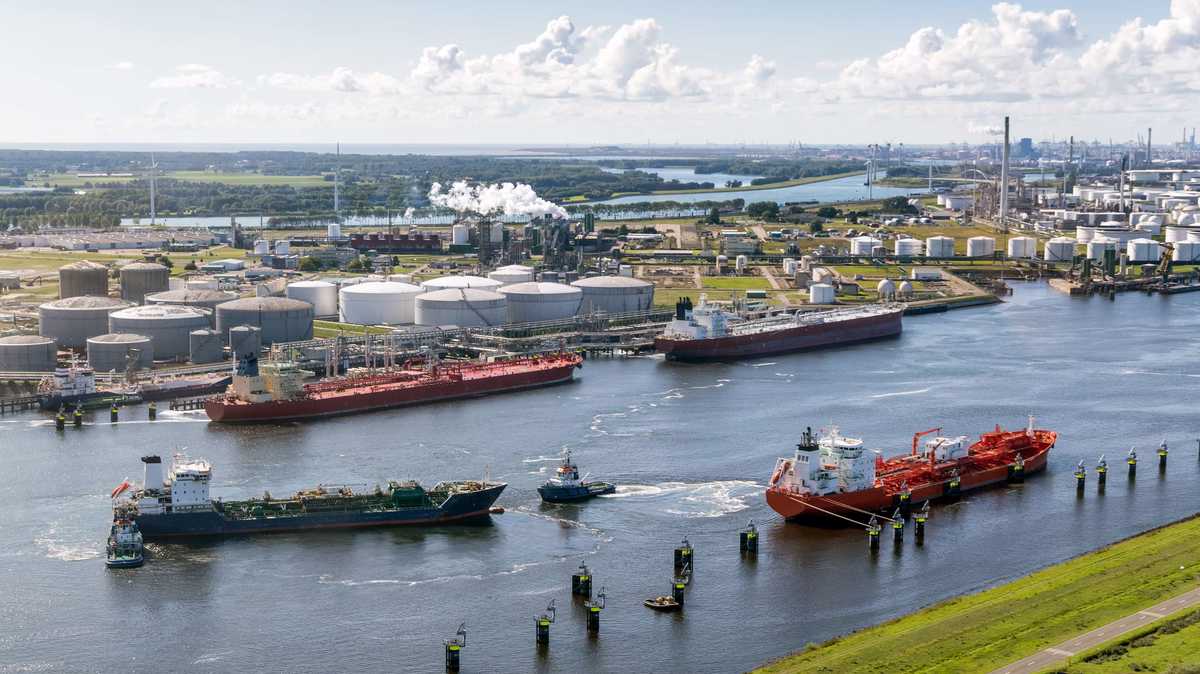Rapid policy actions can de-risk green corridors and attract investments – GMF
Governments must "narrow the cost gap associated with scalable, zero-emission technologies" to stimulate private sector investment, the shipping non-profit Global Maritime Forum (GMF) said.
 PHOTO: Aerial view of Port of Rotterdam. Getty Images
PHOTO: Aerial view of Port of Rotterdam. Getty Images
“The success of green shipping corridors hinges on focused, timely, and transformative policy action by national governments,” highlighted a new report authored by GMF’s project manager Elena Talalasova and project director – decarbonisation Jesse Fahnestock.
The report explained that even though private sector investment is crucial, government intervention is necessary to facilitate these investments in green shipping corridors.
“The best way to achieve this objective is through subsidies,” the report said.
Government subsidies for fuel, vessel subsidies and research and development funding for enabling technologies would be effective mechanisms to reduce cost disparities associated with low- and zero-emission marine fuels and technologies. These subsidies, according to the report, can be easily incorporated into upcoming policy actions like FuelEU Maritime regulations without having to develop new regulations.
“Smart combinations will also seek to provide a best balance between incentivising fuel production – which may need to serve many markets – and ensuring shipping-specific consumption on the corridor or corridors in question,” Talalasova and Fahnestock wrote.
The authors recommended that these subsidies could be combined with "demand-side policies" to promote the use of hydrogen-based marine fuels with zero-emission potential. Policies such as these could complement "supply-side policies" designed to boost production.
Moreover, they noted that such policies would reduce the cost gaps, ease fuel shortages and speed up their adoption at the same time. This would in turn spur private sector investment into the green corridors.
A similar argument was earlier made by James Henry, the chief commercial officer of Ørsted’s power-to-X (P2X) division. He explained to ENGINE that addressing policy support didn't have to be an "either-or situation" in terms of bridging the price gap between alternative and conventional fuels.
“Both supply- and demand-side policies are needed to solve the chicken-and-egg situation that the P2X sector is facing today,” Henry said.
“For the short- and mid-term, kick-start funding is needed to ramp up production and reap the cost-reductions from innovation and economies of scale. That includes financial support for both investments and operations, as well as regulatory clarity on definitions and standards. In parallel, stimulating the demand side pull is just as important and should become the main regulatory market driver in the long term,” he further emphasised.
The authors also suggested possible solutions such as "splitting the funding between the countries along the corridor and promoting value chain action" to alleviate the financial burden on national governments.
By Konica Bhatt
Please get in touch with comments or additional info to news@engine.online





